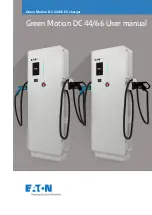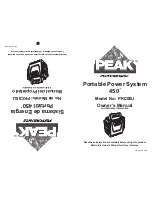
7
EN
WARNINGS - READ CAREFULLY
•
This charger is designed to charge various lead batteries (as WET, GEL, AGM etc.), widely used in
cars, motorcycles and other types of vehicle. Do not charge different types of batteries or faulty
batteries.
•
Read carefully instructions before using the charger.
•
For indoor use only.
•
Protect the battery charger from moisture and water or rain drops.
•
The charger has to be placed away from heated surfaces during use.
•
Do not use charger if cords or wires are defective. Replace immediately.
•
Any supply extension cable should be of the correct cross sectional area.
•
Do not use the charger if its case is broken. Take it to qualified personnel for inspection and repair.
•
Do not disassemble charger, an incorrect reassembly may cause electric shocks or fire.
•
Make sure to use the correct input power supply otherwise the device could not work properly.
•
When plugged to the power mains, the charger resets itself automatically and stays in standby state if
no further action is executed by the user.
•
While charging battery, leave the battery caps loose.
•
Ensure that electrolyte level in each battery cell is some millimetres higher than the plates.
•
If the battery is an AutoFill type, manufactured b Dagenite or Exide, the glass halls and the long filter
cap must be left in place for the duration of the charge.
•
Place the charger as far away as possible from the battery to be charged.
•
Batteries generate explosive gas fumes when charging. Use charger in a well ventilated room. Do not
smoke, strike a match, cause a spark or have an open flame near battery while charging.
•
To avoid that sparks may develop at the end of the clamps, before switching on the charger, ensure
tight and cleaned connections between the charger clamps and the battery terminals.
•
Do not short circuit charger clamps. Do not allow clamps to touch one another at any time. Ensure
that there is no short circuit on the battery poles otherwise the battery may explode.
•
Do not position your face above batteries at any time while making connections and during charging
process.
•
ATTENTION! The acid of batteries is corrosive.
If battery acid comes into contact with skin or
clothing it should be washed immediately with water. If it comes into contact with eyes they should
immediately be washed in a water eyebath and a doctor should be consulted.
•
Always unplug the power supply cable of the charger from the mains before connecting or
disconnecting the battery.
•
If the battery does not reach the full charge in 120 hours (MAX), the charger must be disconnected
manually.
•
Batteries left discharged may be seriously damaged by sulphation and can easily freeze in a low
temperature room.
•
Never charge frozen batteries.
•
Do not attempt to re-charge non rechargeable batteries.
•
Do not use the charger for charging dry-cell batteries as they may burst and cause injury to persons
and damage to property.
CONNECTION INSTRUCTIONS
For connecting the charger to the battery, follow the following operations in the sequence indicated:
•
Always unplug the power supply cable of the charger from the mains before connecting or
disconnecting the battery.
•
Connect the
RED
output cable to the battery terminal post not connected to the ground.
•
Connect the
BLACK
output cable to the chassis of the vehicle, away from the battery and the fuel
pipes.
For disconnecting the charger from the battery:
•
Unplug the power supply cable of the charger from the power mains.
•
Disconnect the
black
clamp from the chassis.
•
Disconnect the
red
clamp from the battery terminal post.
Using eyelet type terminals.
•
Connect the output lead with black eyelet to the negative terminal (-) of the battery.
•
Connect the output lead with red eyelet to the positive terminal (+) of the battery.
•
Make sure the two eyelets are secured correctly to the terminals of the battery so that they generate
an optimal electrical contact.








































